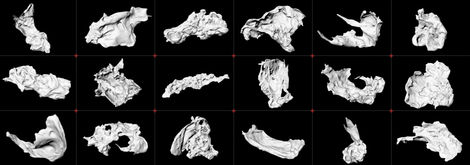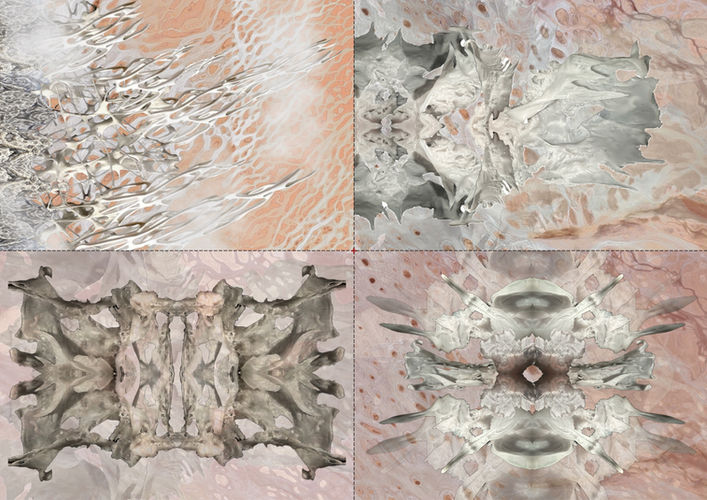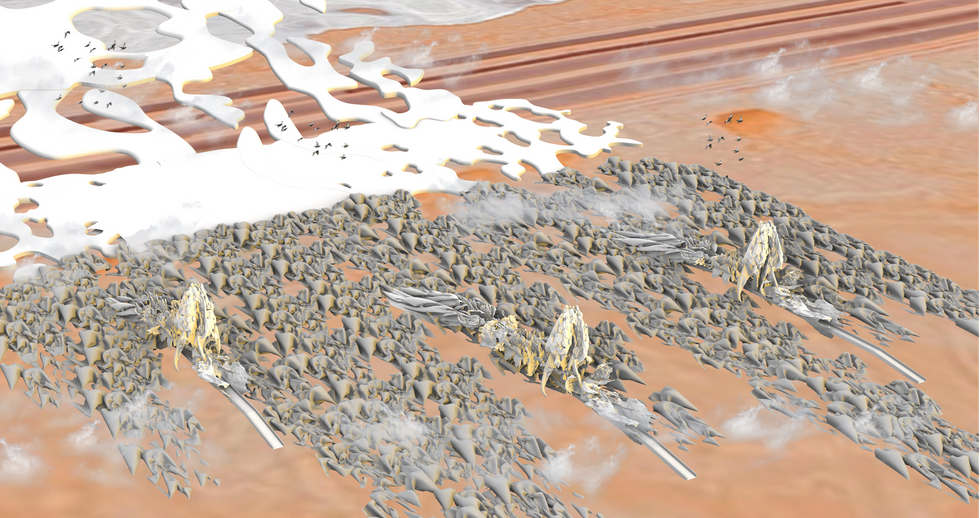Create Your First Project
Start adding your projects to your portfolio. Click on "Manage Projects" to get started
Intibā‘ Al-Sabkha
Architecture Studio
V | 2025
Location
Boubyan Island, Kuwait
Instructor
Professor George Katodrytis
Intibā‘ Al-Sabkha proposes a camouflaged ecological observatory embedded in Boubyan Island’s salt marsh edge, an architecture that registers rather than resists environmental change. The project explores how architecture can embody impermanence through a morphology shaped by water, salt, and migration. Through biomimicry of sedimentation, porosity, and tidal flow; fluid forms like the observation tower and research station merges seamlessly with the Sabkha landscape and becomes a porous imprint of the landscape itself and the island’s geological processes. Rather than treating the site as a passive backdrop, it acts as an active collaborator, shaping the form, lifespan, and material behaviour of the architecture. Intibā‘ Al-Sabkha blurs the boundary between artificial and natural, observer and observed, human and nonhuman, built and natural, proposing a speculative model of coexistence, a structure for birdwatching and migratory research that behaves like a fossilized remnant of its own environment, both shaped by and shaping the tidal and wind patterns around it.
Process -
The process began with hands-on material experimentation using wax and water to simulate the sabkha’s dynamic behaviors, erosion, sedimentation, and crystallization. By varying wax and water temperatures, I observed a spectrum of outcomes: hot wax in cold water solidified rapidly into jagged, brittle forms, while cooler wax in warmer water produced smoother, more fluid geometries. Each trial became an exploration of controlled unpredictability, where some models shattered on contact, while others captured striking, fabric-like transitions.
These ephemeral forms were scanned before breaking, preserving their forms and textures as digital artifacts. Through digital manipulation, the scanned fragments were collaged into hybrid structures, forming speculative geometries that blurred the line between natural formation and architectural intention.
The workflow unfolded more like geological fieldwork than traditional design, guided by iterations, and material response. The resulting architecture draws directly from these experiments, embedding the sabkha’s fluid logics into its morphology. Rather than designing an object, the process revealed a method for letting the landscape and its forces shape the form, creating a structure that behaves less like a building and more like a residue shaped by place.














































